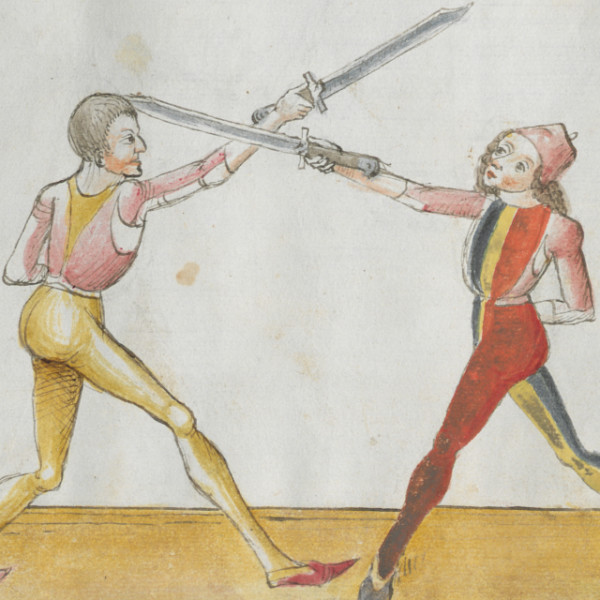
We’re making replicas of a famous Medieval manuscript by historical fencing master Hans Lecküchner.
tl;dr
We’re reproducing the massive (434 page) illustrated manuscript of Hans Lecküchner. This time we’re doing two different versions, both of which will have the same high-resolution scans at their original size (207 × 300 mm; ~8.1 × 11.8 in).
- One will be a near-perfect replica of the manuscript, including a half-leather bind with authentic Medieval tooling and exposed beechwood covers, gilded edges on the pages, the exact quire structure of the original, and other such details. This costs $350.
- The other one is a simplified version that’s as inexpensive as I can make it. It will also be a half-leather bind, but without tooling and with linen covered bookboard rather than beech; the pages won’t be gilded, the quire structure won’t be replicated, and in general it will be a nice book rather than a replica. This costs $200.
To make this happen, we need to sell a minimum of 100 of the wooden facsimile and 150 of the linen edition (or, I guess, 250 of the wooden one).
Short Summary
My name is Michael Chidester. I started HEMA in 2001, and for the past eleven years, I’ve been leading a project called Wiktenauer. Wiktenauer grew out of a desire to set the text of our fencing manuals free from the page and put it into the hands of fencers. What I’d like to do with this project is different: put the page, and the whole book, into your hands as well. We’re going to produce a full facsimile of one of the most important and beautiful 15th century fencing treatises, the copy of Kunst des Messerfechtens held by the Bavarian State Library in historic München, Germany (Cgm 582).
Facsimile is a word that’s thrown around a lot, and means different things to different people. What I mean when I use it is a careful reproduction of the entire physical book in detail. In other words, it’s a book you can pick up and touch without endangering something priceless, but which will at least half-convince you that you’re holding the original.
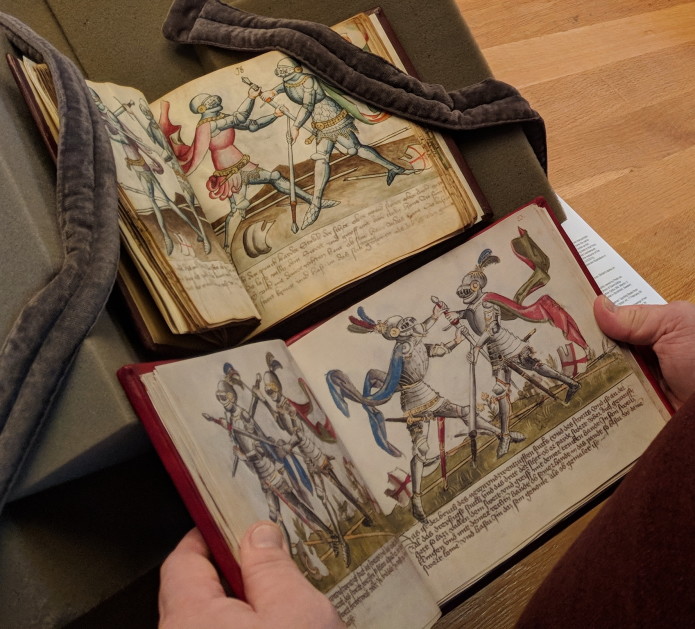
Comparing the Orbis Pictus facsimile of the Krakow Gladiatoria to the New Haven Gladiatoria manuscript.
At various times, I have had the privilege of handling several 15th and 16th century fencing manuscripts, as well as copies of most of the printed fencing manuals published before 1600, and I wish everyone in HEMA could have that same chance. It’s a way of connecting to history that’s hard to describe.
In 2019, I started producing facsimiles of fencing manuscripts to try to capture at least a small piece of that magic, and give you a sense of what the origin of our fencing reconstruction really is. Each of them is contains lessons about fencing, and also about the cultures and ideas that produced them. So far, we’ve done the Copenhagen Talhoffer manuscript and the Getty’s Fiore manuscript.
Now we’re taking on the biggest project yet: Hans Lecküchner‘s masterpiece.
What We Need & What You Get
The Lecküchner facsimile will be our most ambitious facsimile yet. The manuscript Cgm 582 contains the most lavish and extensive fencing treatise of the 15th century, and one of the longest treatises in the entire Liechtenauer tradition. It is also a beautiful book, with over four hundred painted illustrations, exposed wooden boards, and gilded page edges.
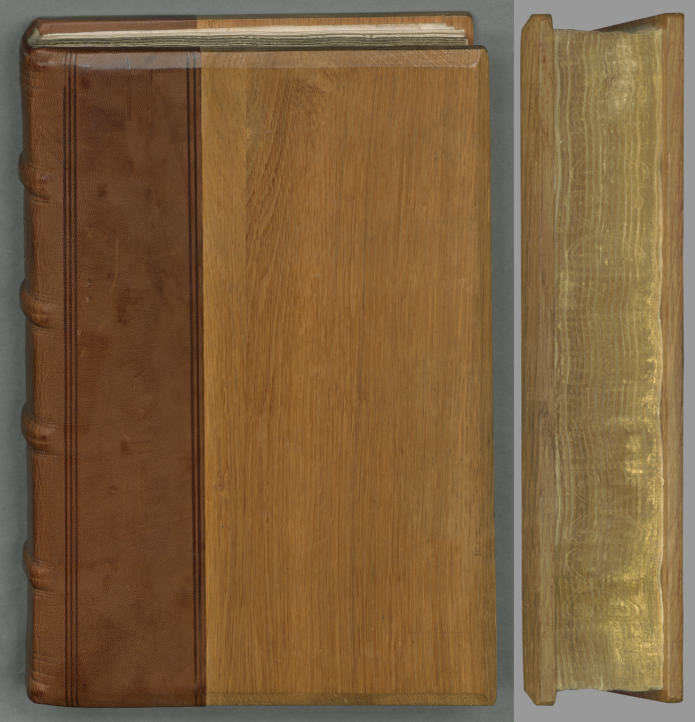
The covers of our facsimile will be made of beech, which is the material used almost universally in continental Medieval manuscripts. The leather will be pigskin, which is the typical material for 15th century Germany. (It’s been pointed out to me that that might result in religious problems for some people, so if you don’t want to handle pig, please reach out and we’ll be sure to make yours in goat or cow.)
Unfortunately, the cover it currently has is not original—it was rebound in the 1960s and the library has no information about what the original cover looked like, except that it was also a half-bind with exposed boards. Medieval half-binds would have blind tooling on the leather, so to replicate that I found another half-leather bind from Nuremberg at the end of the 15th century, and we’ll be basing the tooling design on that.
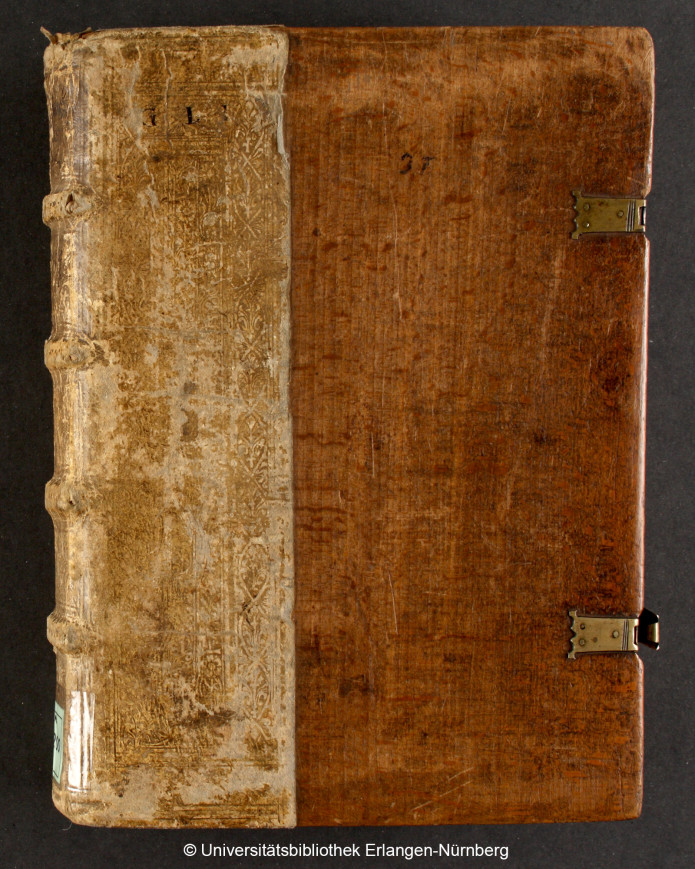
Inside of these wooden covers we’ll be printing beautiful high-resolution scans onto cotton rag paper of the correct size (207 × 300 mm; ~8.1 × 11.8 in), and built with the same quire structure as the original manuscript. The edges will be gilded like the original, though sadly, no one we’ve talked to seems to know how to reproduce the faint pattern etched into the gold on the edges (see above).
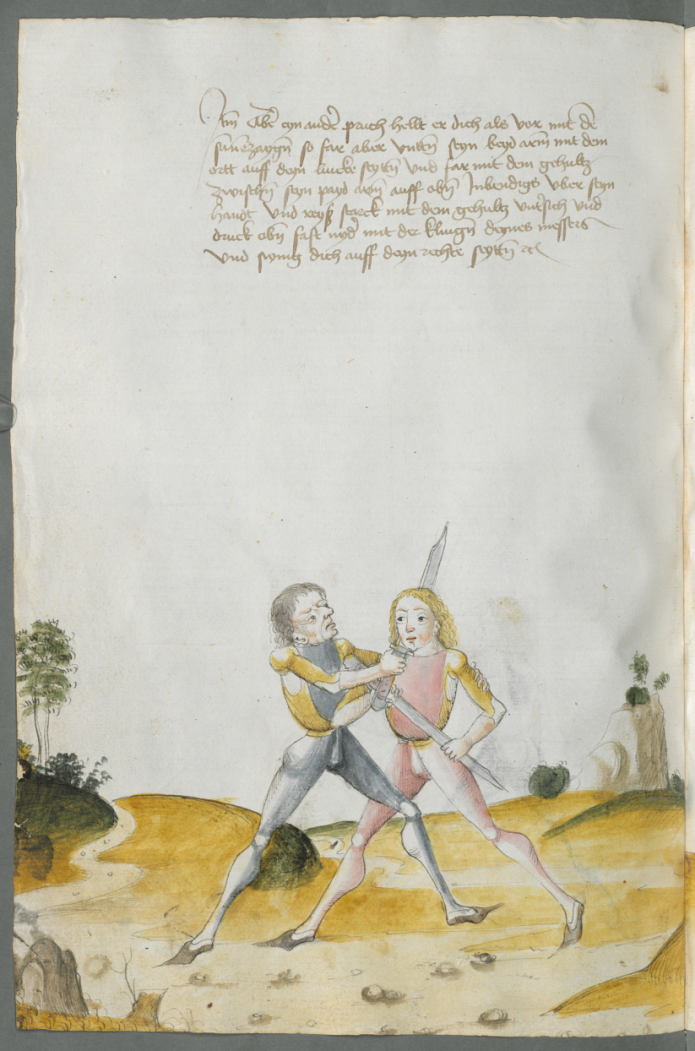
In the world of manuscript facsimiles, the cheapest entries start at maybe $500, and the expensive ones can cost $20,000 or more. I started these projects with the question of whether they could be made much cheaper.
The I.33 and Gladiatoria facsimiles produced by other companies several years ago cost $800-1500, whereas my Talhoffer facsimile was just $150. With the Fiore, we tried to make an even more exact replica that any of those three, and the price crept up to $175.
For the Lecküchner facsimile, details like wooden covers and special quires—and the plain fact that it’s half again as long as Talhoffer and five times as long as Fiore—have driven the cost up much further. The facsimile I just described will cost $350.
However, the spirit of the original project has always been to put facsimiles into as many hands as possible, so I’ve worked with the bindery to design a simplified version. This one will skip the blind tooling pattern, replace the wooden boards with linen-covered bookboard, and will not attempt to replicate the quire structure or gild the edges of the pages.
This will no longer be a replica of the original manuscript, but will still be a nice book and will only cost $200 (and, we could argue, is still within the range of what Medieval manuscripts in modern bindings sometimes look like).
The Talhoffer project turned into an accidental two-tier scheme when we decided to offer a single parchment covered copy. The Fiore did as well when we added optional gold ink that more than doubled the price of the facsimile.
This time we’re starting with that end in mind, but in order for this project to be viable, we need to sell at least 250 copies, of which a minimum of 100 need to be the wooden book.
Other Stuff
First, we’re not charging shipping up front. In the last two projects, the shipping market (and shipping costs) changed drastically between the campaign and the actual distribution. This time, we’re going to wait until the books are ready and then charge shipping—ideally the postal apocalypse will have ended by then and shipping costs drop again. This will also allow us to offer you a variety of shipping speeds from different services, which Indiegogo doesn’t allow.
Second, there will be another companion volume! For the Talhoffer project, we put together a book of research on topics related to Talhoffer, including contributions by seven authors. The Talhoffer companion volume was universally praised, and Bill Grandy of VAF called it the most important HEMA book of the past few years.
For this companion volume, we have ten authors lined up and we’re going to try to outdo ourselves. This time we’re not going to bundle it as a perk add-on (which confused a lot of people in the Talhoffer campaign). Instead, we’ll send you a link where you can purchase it directly when it’s ready. Stay tuned for more updates on the contents as the campaign proceeds.

Finally, why are we doing this now, when less than half of the Fiore books have shipped? Because this is a giant, complicated logistical machine. All of these books are paid for up-front, so the bindery won’t start working on the books until after I have raised the money. In addition, the wood supplier needs at least a month to produce the wooden boards (and also won’t start until we have the money), so the bindery can’t produce a complete test book until at least a month after the fundraiser ends.
I want to launch two facsimile projects this year, so the second project needs to start in August, and with one month needed to make the covers and about three months to produce the books once I approve the prototype, that means if we want to be done in July we need to start now. Heck, we should have started on February 1st, but working out the details of the inexpensive book delayed us a week.
Risks & Challenges
Most details of the Lecküchner facsimile are based on previous work in the Talhoffer and Fiore facsimiles, so there won’t be many surprises. The part we haven’t tried before is wooden covers, but the bindery assures me they know how to make it work.
The bigger risk is that we won’t get enough orders for the expensive replica books. The quotes from the bindery rely on a minimum of 100 orders of the wooden book and 150 orders of the linen book. If we reach the last day of the campaign without hitting both goals, then no matter how much money we raise, I’m going to have to cancel the campaign and refund everyone’s money.
And the pandemic itself remains an issue which makes business unpredictable. The shipping industry is in disarray, and the threat of shutdowns for nonessential businesses (like, say, binderies) has not passed. If the plague flares up again, all timelines are off, we probably won’t be able to do a second facsimile this year, and all we can promise is that we’ll do our best to get you your books as soon as we can.
Other Ways You Can Help
If you can’t contribute to this project, please spread the word anyway. We received about 400 orders each for the Talhoffer and Fiore facsimiles, so let’s see if there are at least that many Liechtenauer enthusiasts out there!
Please share this campaign with your clubs, with your friends, and on social media!
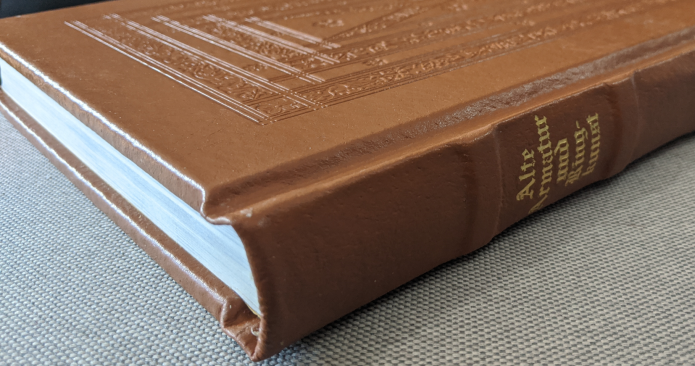
Praise for the Talhoffer Facsimile
“The Talhoffer reconstruction that Michael Chidester has spearheaded and produced is nothing short of magnificent. Its quality is quite high and exactly what you would expect for the price, and the experience of paging through a manuscript is invaluable for researchers of fight books. I plan to purchase each edition as they come out, even if the book is outside my typical study, and recommend you do the same.”
~ Jess Finley, author of Medieval Wrestling
“As the author and publisher of several translation/editions, there is something uniquely magical about holding an exact facsimile of a 600 year old book, no additions or alterations. Michael has worked hard to bring just that in an affordable edition with his recent Talhoffer, and it is a delight to behold. I am excited to build a collection of all the volumes that follow.”
~ Greg Mele, co-author and editor of the Flowers of Battle series
“It’s frickin’ amazing. I just spent half an hour drooling over every page… and wishing I had the armor… and the carts!”
~ Jake Norwood, the guy who named Wiktenauer
“Producing a top-quality hand-bound facsimile is a challenging project, but Michael Chidester’s Talhoffer reproduction exceeded my expectations in quality and in the speed of execution, producing extraordinary book for a very low price. I’ll treasure it forever. He was also unusually efficient at keeping his backers informed of the inevitable Corona-related hitches along the way. I am 100% confident in backing his Getty Manuscript facsimile campaign, because I know he can and will deliver.”
~ Guy Windsor, itinerant swordsman and author of many books about Fiore

